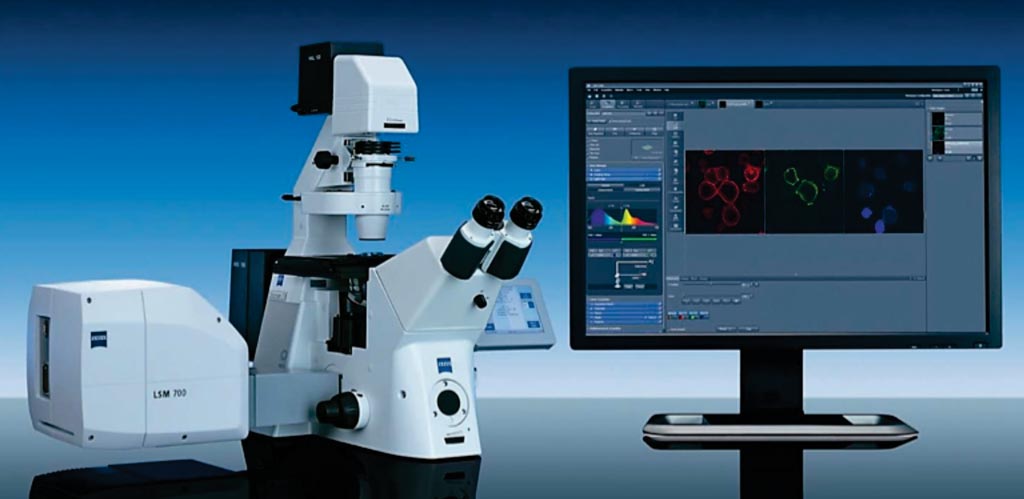Biomarker Identified for Aggressive Early Stage Cancer
By LabMedica International staff writers
Posted on 27 Apr 2017
Breast cancer begins as anomalous cells that divide out of control, usually in the milk ducts and in almost all cases, a patient does not succumb to the initial cancer but to the secondary tumors after the cancer has spread.Posted on 27 Apr 2017
Over the past two decades, mammography's ability to detect ever more miniscule lesions has significantly increased and as a result, many patients with harmless lesions undergo surgery and radiation therapy. By sorting the aggressive from the benign, doctors could tailor therapies more accurately to each patient and avoid the dual pitfalls of costly overtreatment and potentially fatal undertreatment.

Image: The LSM 700 laser scanning microscope (Photo courtesy of Zeiss).
Scientists at the Whitehead Institute and their associates analyzed the regulators of about 350 genes with increased expression in the invasive regions of cancers. The team also analyzed the gene SWI/SNF Related, Matrix Associated, Actin Dependent Regulator (SMARCE1) levels in tissue samples from about 200 early stage breast cancer patients in a retrospective study. Those with the highest SMARCE1 levels were the most likely to suffer from metastasis and have the worst outcomes. The relationship between SMARCE1 levels and prognosis held true for lung and ovarian cancer patients as well, suggesting that the gene's importance is not limited to one kind of cancer.
The team used many different methods to arrive at their conclusions, including cell culture, module identification, identification of candidate upstream regulators, three-dimensional invasion assays, Western blots, in vivo tumorigenicity and metastasis assays, measurement and quantification of circulating tumor cells and immunochemistry. Microscopic imaging and analysis was performed using confocal images of spheroids, which were captured by using a laser scanning microscope, the LSM 700 series.
The scientists found that SMARCE1 only seems to be important during the early stages of metastasis, making it a suitable biomarker for this critical step. When the team analyzed SMARCE1 activity in a model of human breast tissues, they determined that SMARCE1 is required for localized breast cancer cells to escape into the surrounding tissues. Without it, the cells stay confined and relatively harmless. They found that 50% of the early-stage cancers with high SMARCE1 expression will metastasize at some point in the 10 to 15 years after their initial diagnosis.
Yu-Xiong Feng, PhD, a senior co-author of the study said, “We looked at every step of the metastatic cascade, and the tumor growth at the primary site, as well as the growth at the distant metastases, are not affected by this gene.” The study was published on April 4, 2017, in the journal Proceedings of the National Academy of Science USA.













